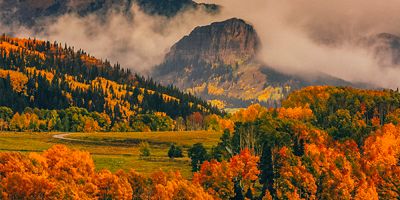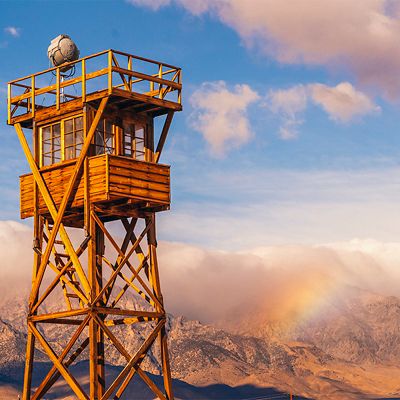The National Park Service manages over 63 national parks for all public land lovers to enjoy. And while each park has something different and unique to offer, they don’t all offer great experiences for folks with disabilities who need to consider things like ramps and trail widths, or ADA-compliant, wheelchair-friendly hotels. Thankfully, that’s been changing. In 2012 the NPS established an Accessibility Task Force to work on improving access and ADA compliance across its parks. Four in particular stand out in terms of both accessibility and opportunities offered for activities worth putting on any disabled visitor’s list. Before heading to one of these parks, consider applying for a NPS Access Pass, which is a discounted lifetime pass ($10 processing fee) that allows people with permanent disabilities to visit more than 2,000 recreation sites for free.
Grand Canyon National Park
Though the Grand Canyon is one of the most popular national parks, don’t be intimidated by its iconic topography; you can get some of the best views available from the rim, without descending the steep and rocky paths toward the Colorado River. Head to the South Rim, which is dotted with wheelchair-accessible overlooks (the best view is from Mather Point), and where free ramp-equipped shuttles can deliver visitors to various spots in the area. Guests can also get a Scenic Drive Accessibility Permit, which offers entrance to certain areas that are closed to regular traffic. If you want to experience the river itself, Arizona Raft Adventures can outfit and guide your trip. They have ramps to launch their motorized boats, wheelchair tracks for sand, and alternate hiking and toilet systems. For those who prefer terra firma, you can’t beat the 13-mile Rim Trail, much of which is accessible and frequently crosses shuttle pickup spots. For a shorter jaunt, head to the 1.3-mile Trail of Time (which is part of the Rim Trail). It starts at Verkamp’s Visitor Center and ends at the Yavapai Geology Museum. You experience spectacular views and can expect to learn a handful of interesting facts along the way.
Yellowstone National Park
Most people think of Old Faithful when they think of Yellowstone, which to be fair, is spectacular and one of the more predictable geysers of the massive Wyoming park’s few hundred. It’s a can’t-miss stop when visiting the park, and there’s a wheelchair-accessible boardwalk that leads right to it (you can borrow a wheelchair at the lodge if you need one). There’s accessible parking at the Old Faithful Inn and from there you can check out the Morning Glory Pool and a few other area geysers (Riverside, Castle, and Daisy). If you download the app GeyserTimes, you can see when each is predicted to erupt. The park also has an accessible fishing site on the Madison River at the Mount Haynes Overlook. The NPS Yellowstone National Park app also has audio tours of different sites and is an effective way to get current information about accessibility for various trails and destinations in the park.
Great Sand Dunes National Park
The rippling 150,000-acre sand dunes are flanked by the beautiful Sangre de Cristo Mountains. While sand dunes and wheelchairs don’t mix, sand dunes and specialized wheelchairs (fit with large inflatable tires) do mix. Thankfully, visitors are free to use one of these wheelchairs and can even reserve them ahead of time during busy seasons. You’ll need someone to help push through the sand, especially if you want to get to the top of the dunes. The southern Colorado park has a handful of accessible campsites at Piñon Flats Campground and the picnic area is accessible as well.
Acadia National Park
This gem in the northeast shines in terms of accessibility. There are free daily shuttles that transport visitors from nearby villages to the park (all are handicap-accessible), which is ripe with accessible beaches, picnic areas, trails, and museums. The Maine park will provide ASL interpreters if asked three weeks in advance and has braille brochures, assistive listening devices, and audio tours available. Echo Lake, Sand Beach, and Ike’s Point have accessible options. Echo Lake has wheelchair-accessible parking spots and a path to the water. Jesup Path, a 1.5-mile out-and-back, offers an accessible boardwalk that travels through a forest of white birch.










